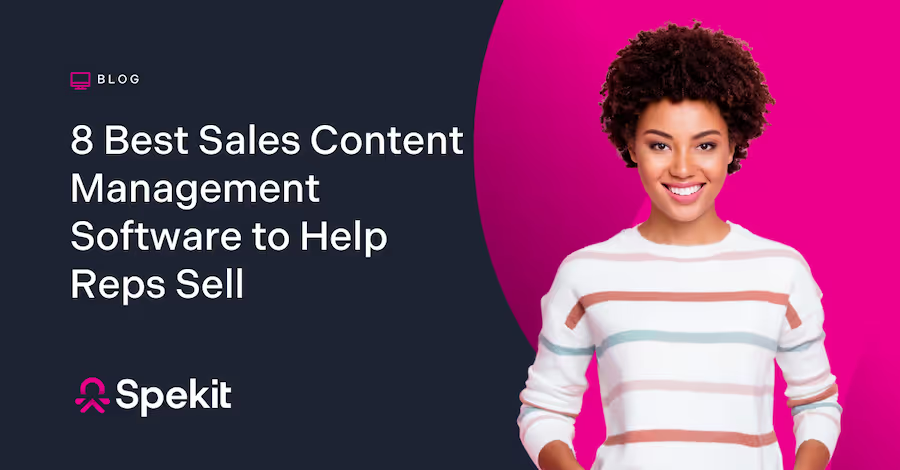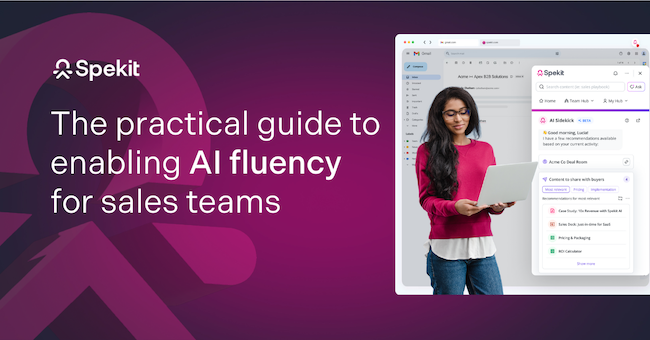Having a sales enablement plan in place has become a strategic priority for many companies, and for good reason. Companies with successful sales enablement have 32% higher sales team quota attainment, 25% higher individual seller quota attainment, and 23% higher lead conversion rates.
But creating an effective sales enablement plan is about more than producing sales policies and collateral and calling it a day. Sales enablement shouldn’t be looked at as a one-and-done strategy that’s forever set in stone; rather, an iterative process that ensures your customer-facing teams are always equipped with the best content, resources, and tools to achieve their quotas.
If the idea of building out a sales enablement plan that’s both intentional for your company and empowering for your reps feels overwhelming, fear not. This article covers exactly how to make it happen, step-by-step.
Why Do You Need a Sales Enablement Plan?
Sales enablement, the process of providing reps with the content, tools, and training necessary to do their jobs effectively, acts as a clear and precise framework for achieving consistent sales growth. It brings your sales, marketing, and customer support teams into alignment so that everyone stays organized, in the know, and on-target.
Having sales enablement best practices in place allows your reps to:
- Go into every pitch prepared and empowered to close deals
- Access sales collateral with ease
- Use advanced metrics to optimize their sales processes
- Stay on top of updates to the sales pipeline sans overwhelm
- Automate busywork so they can focus on selling
If your customer-facing teams don’t follow a consistent selling process, spend more time looking for the right sales collateral than selling, or are drowning in administrative tasks, then a sales enablement plan is very much in order.
Benefits of Developing a Clear Sales Enablement Plan
The sales process is complex and ever-changing, so much so that having a clear sales enablement plan in place isn’t just a nice-to-have, but a necessity. Case in point: Organizations with a sales enablement strategy achieve a 49% win rate on forecasted deals.
Let’s explore the most substantial ways an effective sales enablement plan can lead to more revenue and profitability.
Increased efficiency and productivity
Only 39% of a sales rep’s time is spent selling. The rest is consumed by non revenue-generating activities, a whopping 440 hours per year, for example, is spent searching for the right content to share with prospects. Meanwhile, 66% of reps say they’re drowning in tools, with sales teams using an average of 10 tools to close deals.
A strong sales enablement plan can reduce the administrative strain preventing reps from connecting with prospects and moving deals forward in several key ways:
- By providing a centralized platform where customer-facing teams can quickly surface and share the right sales collateral with prospects and customers
- By clarifying your company’s goals and pain points, allowing you to consolidate your tech stack to only the most impactful tools and software
- By leveraging AI to expedite content creation, improve content adoption, and reduce content maintenance
- By helping to automate repetitive tasks, such as lead scoring and data entry, so more time can be spent selling
- By fostering ongoing communication and collaboration between customer-facing teams and enabling them to optimize every stage of the buyer’s journey
All of these benefits add up to revenue-centric teams that are more agile and efficient throughout the entire sales process.
Shorter sales cycles
An effective sales enablement plan is the foundation to creating a smooth and streamlined customer journey. When your sales and marketing teams have a clear map and centralized location to swap insights and data, it ensures the customer intel and sales techniques they’re using are the most accurate and effective to date. Cue shorter sales cycles and better win rates.
This also extends to cross-selling and upselling. A sales enablement plan gives reps easy access to the data-driven insights and training necessary to land new and ongoing deals with existing customers.
Accelerated ramp-up time
The average ramp time for new reps is just over three months, put a strong sales enablement plan in place, and this can decrease onboarding time by up to 50%. Effective sales enablement programs accelerate the onboarding process by providing newbie sellers with the content, tools, and training they need to not only get up to speed quickly, but maximize their potential.
Ongoing training and coaching
Roughly 84% of sales training content is forgotten within three months, underscoring the importance of ongoing training and coaching for both newer hires and veterans alike. Continuous learning is one of the cornerstones of an effective sales enablement plan, and can lead to a 50% increase in net sales per employee.
Some of the best sales enablement software, like Spekit, reinforces sales training wherever reps are selling. How? By embedding sales plays for high-value accounts and target industries directly in the flow of work, notifying reps of time-sensitive changes and new resources, and triggering in-app quizzes to strengthen reps’ knowledge.
Data-driven planning and goal-setting
Sales enablement tools usually include built-in sales content analytics and reporting features that allow customer-facing teams to keep close tabs on sales pipelines and performance. This data can help you spot potential problem areas and take proactive steps to address them, such as sluggish pipeline stages, thin sales content categories, and overlooked market trends.
The result? Optimized sales processes and higher conversion rates.
Improved customer engagement
Sales enablement isn’t just about empowering customer-facing teams, but enhancing the customer experience itself. Over 70% of customers expect better personalization as technology advances, while 65% expect companies to adapt to their changing needs and preferences.
Providing your sales team with customer-centric metrics, such as pain points, buying behavior, and product usage, enables them to offer contextualized experiences to prospects that make them feel understood and valued. When conversations are meaningful and solutions are tailored, customers are more likely to stick around for the long haul.
Sales Enablement Plan Template
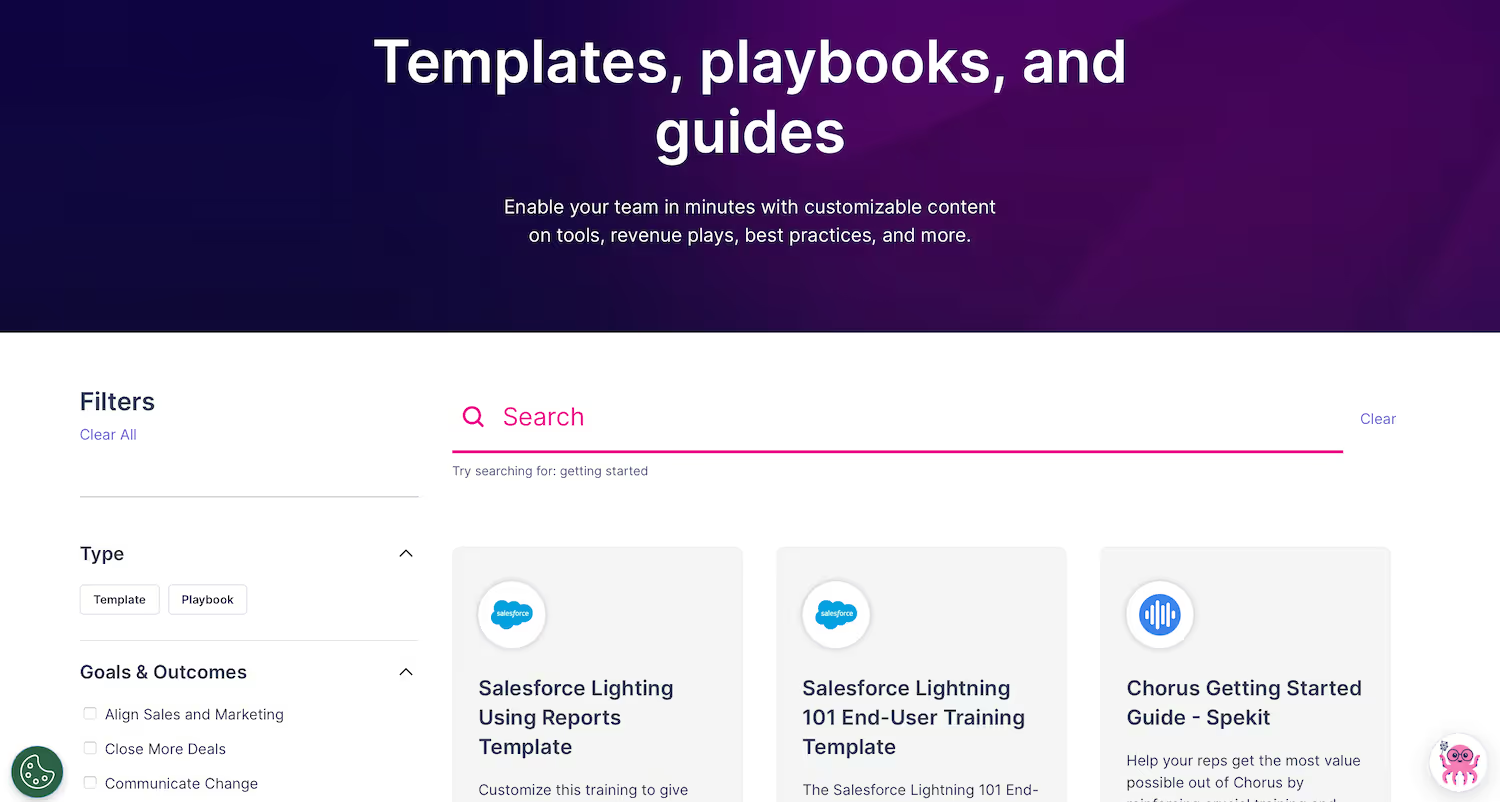
Like any business strategy, it’s important to document your sales enablement plan and make it official.
The following step-by-step guide will help you craft—and maintain—an effective sales enablement plan for your company.
1. Define Your Sales Goals and Create Your Sales Enablement Charter

The first step to any sales enablement plan is clearly defining your overall sales goals, the specific processes and tools you’ll use to achieve them, and exactly how you’ll measure success. This blueprint is better known as a sales enablement charter, a formal document that, once drafted, is presented to the team for sign-off.
A popular charter structure you can use as a jumping off point is V2MOM, which stands for vision, values, methods, obstacles, and measures. Similar structured approaches work well for product launch plans and other cross-functional initiatives. It goes something like this:
- Vision: What’s the vision you want to achieve?
- Values: What principals and beliefs can help you make this vision a reality?
- Methods: What methods will you use to make it happen?
- Obstacles: What obstacles might you need to overcome along the way?
- Measures: What measurements will you use to track your success?
Defining where you want to go also involves assessing where your sales processes and collateral currently stand—and nobody knows this better than your sales team.
2. Speak With the Sales Team About Their Needs
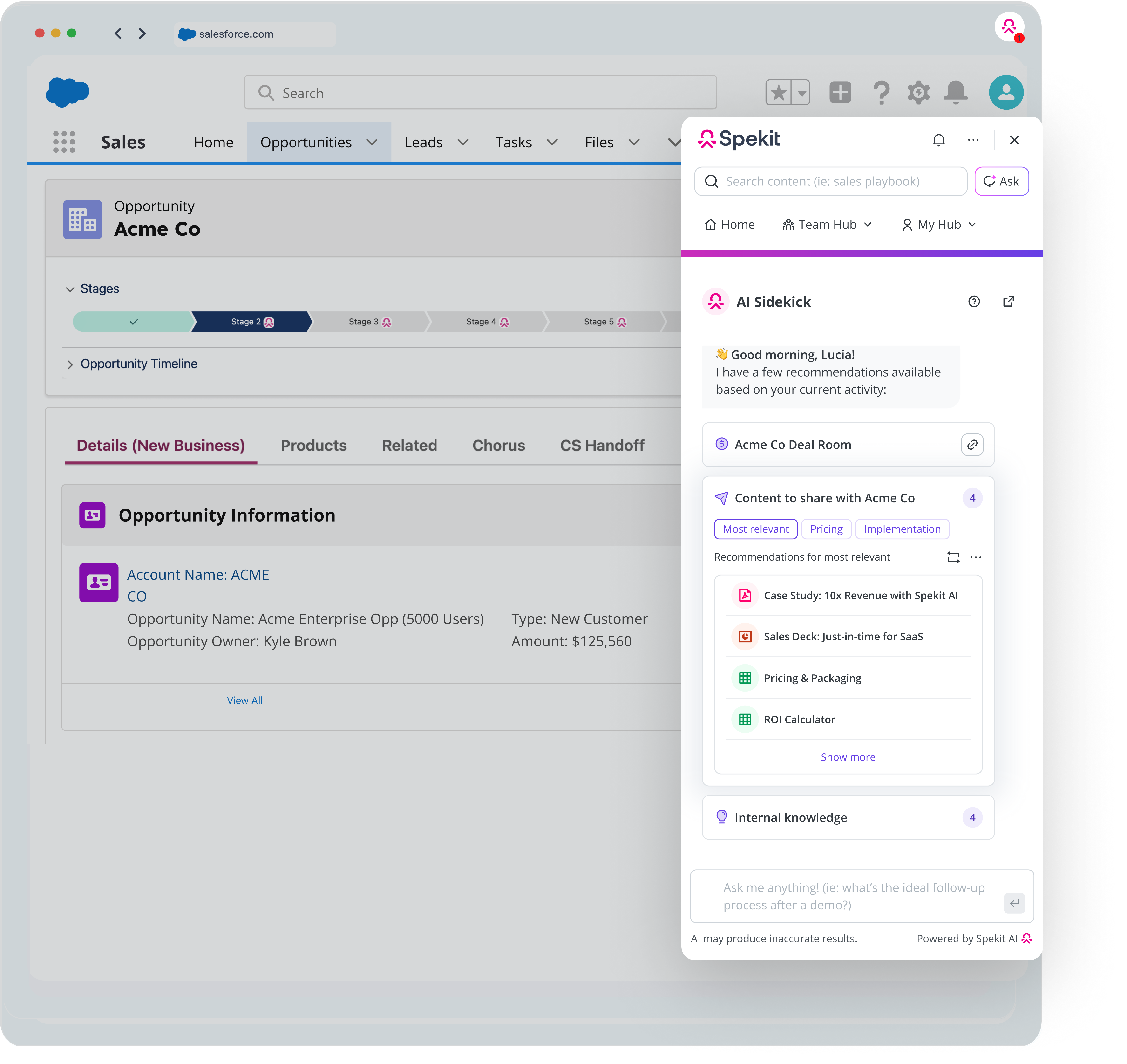
Consulting with your sales team is a crucial part of fine-tuning your sales enablement charter. For one thing, it helps to ensure your sales processes match up with your mission. It’s also the perfect opportunity to audit and optimize your sales content and tech stack so your team has everything they need to make it happen, including any additional training.
During your consults, make sure to go over:
- Pain points and challenges your reps are facing that make quota attainment difficult
- Tools they’re currently using and how effective they are
- Weak points in the pipeline that need to be addressed
- Content, data, and training they need to optimize their sales approach
- Personal accommodations that would help them achieve their goals
- Metrics used to measure individual and team performance—and what that data suggests
3. Choose Sales Enablement Metrics To Track
.png)
Sales enablement metrics look at how well your sales enablement plan is unfolding and are helpful in gauging its short-term and long-term success. Every company has unique metric needs, but some of the more universal data points to monitor include:
- Lead conversion rate: The proportion of leads that convert into customers.
- Content performance: How reps and buyers alike are engaging with your sales enablement content and its impact on performance.
- Knowledge retention: Learn what training techniques are working and where there’s room for improvement.
- Time to first deal: How long it takes a new sales rep to close their first deal.
- Win rate: The percentage of deals won over a certain time period.
- Churn rate: The number of customers lost over a certain time period.
- Sales cycle length: The time from the first contact of a new lead to the final sale.
- Quota attainment: Which reps are consistently hitting their targets versus which need additional support.
You can use these insights to identify exactly what’s working—and what’s not—across the entire pipeline, and make informed decisions on how to adjust course on a continual basis.
4. Develop and Share Your Content and Training Materials

Once you have your sales enablement plan mapped out, you can build out your sales content management strategy—a library of sales resources and training materials that provide your reps with the exact content they need at every stage of the buyer journey.
This library of sales enablement content might include:
- Sales playbooks
- Product sheets
- How-to guides
- Technical whitepapers
- Case studies
- Email templates
- Sales scripts
- Prospecting tips
With Spekit’s generative AI sales tool, Spekit AI, you can instantly create baseline content for playbooks, sales scripts, and tool training. You can also summarize lengthy documents in seconds, converting ineffective long-form content into digestible bites with a single click.
But Spekit doesn’t stop there. The just-in-time sales enablement platform integrates seamlessly with the tools reps already use, like Salesforce, Slack, and Outreach, and helps them adopt and master each tool in real-time. Spekit acts as both tour guide and teacher, delivering the right training materials at the right time.
5. Get Stakeholders Involved
Roughly 70% of customers expect connected interactions and processes across the customer journey, making collaborative selling—and smooth handoffs—between sales, marketing, and service teams more important than ever.
Bringing in key stakeholders across all customer-facing teams and tapping into their expertise can help to maximize the overall success of your sales enablement plan. 60% of sales reps say collaborative selling has increased productivity by over 25%, and more than half say it’s done the same for increasing the pipeline.
6. Map Out The Customer Journey With Assets and Materials
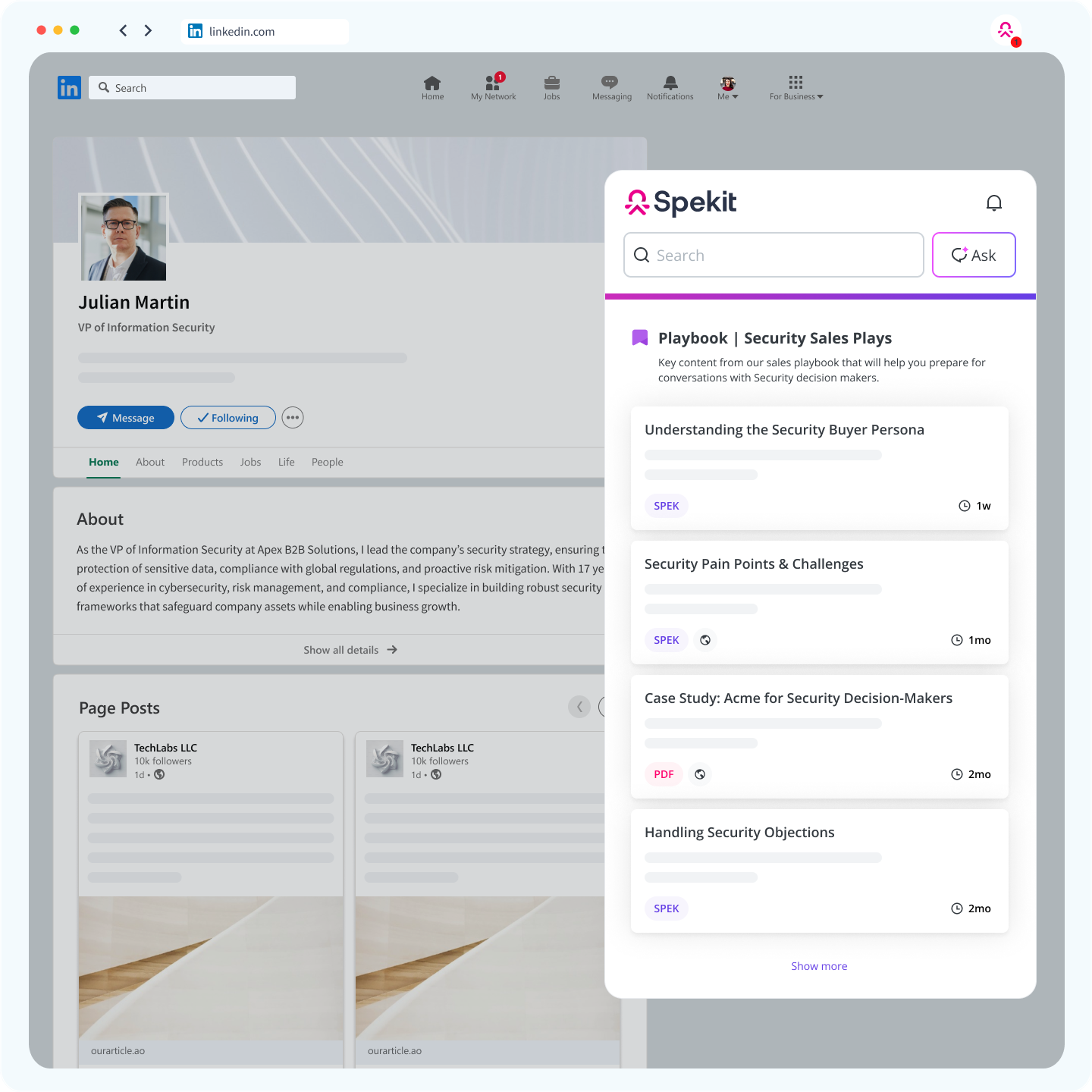
Mapping out the buyer’s journey can help you identify the major touchpoints where your reps interact with customers and tailor your enablement strategy to this path. Evaluate your existing collateral against these touchpoints to pinpoint any additional assets and materials that need to be crafted.
Compiling a comprehensive catalog of sales materials to coincide with the buyer’s journey is one thing—making it easy for reps to find the exact information they need, exactly when they need it, is another.
Spekit reduces search time by not only giving reps a centralized content repository to work from, but access to sales materials—and the ability to share them—directly in their workflow. No need to switch apps.
Spekit AI further speeds up the sales cycle by searching your entire content library and automatically surfacing the exact case studies, one-sheets, and battlecards reps need to close, based on who they’re prospecting to and what they care about.
7. Analyze and Optimize Your Sales Enablement Program

Remember those metrics you decided to track a few steps ago? It’s time to start analyzing the data and using what it reveals to level up the parts of your sales enablement program that are falling flat—and make this process a series regular on your calendar.
Using Spekit Analytics, you can spot coaching opportunities and training gaps, identify what top performers are up to and replicate those habits with your entire team, and easily identify stale content to ensure reps always have the most up-to-date knowledge at their fingertips.
Best of all, you can instantly notify reps of any changes made directly in the flow of work so they’re never out of the loop.
Create The Perfect Sales Enablement Plan For Your Team
No sales enablement plan is complete without a sales enablement platform to centralize your content and optimize your workflows. By making Spekit a part of your tech stack, reps can instantly surface the exact content they need, exactly when and where they need it.
Spekit also empowers sales reps to learn and apply knowledge directly in their flow of work, reducing information overload and boosting retention for both new and seasoned reps alike. Unify all internal and external sales materials under one digital roof, leverage generative AI to create impactful playbooks and sales scripts in seconds, and trigger in-app alerts to automate the reinforcement of sales processes.
Best of all, Spekit automatically works anywhere your reps work—instantly surface with Salesforce, Slack, ZoomInfo, LinkedIn, and more. Ready to join the thousands of teams who are scaling faster with Spekit?





